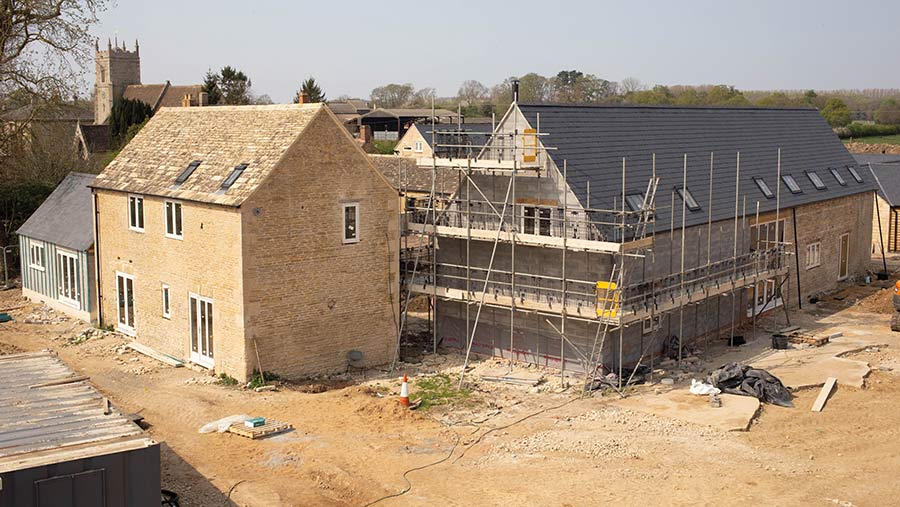How farmers can avoid a Class Q planning permission refusal
 © Tim Scrivener
© Tim Scrivener Class Q permitted development rights (PDRs) have been part of planning legislation for eight years, with the aim of making the process of developing agricultural buildings as housing faster, cheaper and easier.
However, a huge regional discrepancy in Class Q success rates exists, says Louise Newton, associate rural surveyor at land and property consultant Bidwells.
“Local authorities that are typically quite green-belt heavy and generally more restrictive with conventional planning applications really don’t like Class Q, because they regard it as a means of allowing permissions in areas where planning might otherwise have failed,” she said.
See also: How environmental planning system is tying up more farmland
In her experience, planning authorities in south-east England are the most resistant.
For applicants intending to submit a Class Q application, she advises reviewing permissions and refusals for the past 12 months on a council’s planning portal; this provides a useful snapshot of how successful or otherwise an application might be.
For applications that meet the criteria, this option is still the best for securing development permission on redundant farm buildings to create a new dwelling.
Since 2014, there has been 19,402 Class Q applications granted for change of use from agricultural to dwelling houses – an approval rate of just 61%. Taking advice early is important.
For Class Q success, the building must be in agricultural use. A simple mistake, such as an application including photographs showing that it was used for storing household furniture, could rule out submitting a subsequent application for another 10 years, advises Ms Newton.
A mistake like that would rule out submitting a subsequent application for 10 years.
To have a robust application, it is worth engaging a consultant who knows the authority to produce floor plans and elevations, ecology reports, a structural survey, a flood risk assessment (if applicable), and a highways and transport statement.
The process of securing a Class Q can cost £15,000-£20,000, but the potential value added to a redundant building can be considerable.
“In Norfolk, Class Q consent has added £200,000 to the value of a building, and in Hertfordshire, it meant that a building with barely any value was worth £450,000 as a development site,” says Ms Newton.
“Anyone considering applying should do it sooner rather than later, because Class Q might not be around forever.”
Top five reasons for class Q denials – advice
1. Development deemed impractical and undesirable
If the planned development is in close proximity to farm buildings or in a location that does not have access to services or broadband, planning authorities could deem it impractical.
However, that test cannot include sustainability, such as classing a development unsustainable because it lacks access to public transport.
East Hertfordshire District Council launched a legal challenge to that in 2018, when it ruled that a development was undesirable and impractical because it was in an unsustainable location, but it lost.
2. Structural issues
There can be a fine line between converting and rebuilding a building – Class Q allows only for conversions.
Ms Newton says that even in instances where a structural survey has been provided to confirm that a building is in a condition fit for conversion, she has known planning officers to be biased against it.
If an applicant has concerns that a building won’t meet the test for conversion, she recommends applying for a Class Q Part A; this is for change of use, but excludes conversion works.
“Going for Part A and then applying under full planning or Class Q Part B for the conversion works can be more effective.
“You create what is known as a ‘fall-back position’ – a material consideration by the local authority that you can go on and convert that building by full planning or through Class Q,” she says.
3. Agricultural unit test
A building must have been part of an established agricultural unit since March 2013.
Use Google Earth for this or, if you are a registered Basic Payment Scheme claimant, provide maps that prove how long the building has been part of the farming enterprise.
4. Highways and transport
If you have poor access, this can be a common reason for refusal. However, a planning authority can only assess the effect on the highway from a change-of-use perspective, not consider it as they would a new development.
For instance, if it is a working farm, tractors are likely to be coming in and out of an access; the impact would therefore actually be reduced if a tractor is replaced by a car.
5. Curtilage size
There are limits on the size of curtilage that can be provided with the building – for example, if the floor area is 200q m, the garden area cannot exceed 200sq m.
An application to increase it can be made under full planning at a later date.
There is, however, nothing to prevent the owner from selling additional land with the building.
